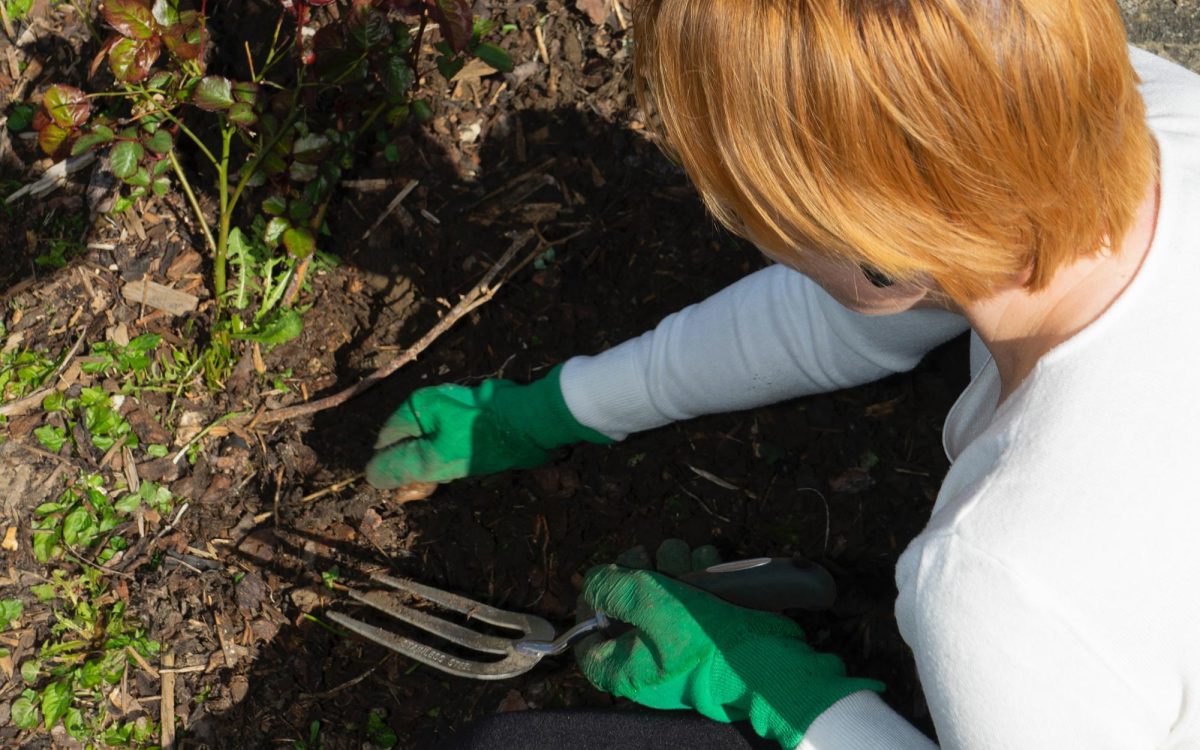Dear EarthTalk: What can I do this fall to ensure my garden looks its best next spring? — Jane B., Boston
Preparing your garden in the fall is an important step to ensure it’s in ideal condition for the next spring. Depending on the size and scope of your garden, you might have a lot to do.
Cleaning up and removing any dead plants, weeds and debris from your garden beds now helps prevent diseases and pests from overwintering. Prune any dead or overgrown branches from trees and shrubs. Also, trim back perennials and grasses to about 2-3 inches above the ground. Rather than discarding fallen leaves and garden debris, consider composting them to create nutrient-rich compost for future use.
If you have perennials that have become overcrowded, fall is a great time to divide and transplant them to rejuvenate the plants and improve their health. If you have tender perennials, shrubs or trees that are susceptible to winter damage, consider protecting them with burlap or other insulating materials.
 Consider testing your soil to determine its nutrient and pH levels. This will help you know what soil amendments are needed. Based on results, add organic matter such as compost, well-rotted manure or leaf mulch to improve soil structure and fertility. Incorporate these amendments into the top 6-8 inches of soil. And it’s never too late to apply a 2-3 inch layer of mulch over your garden beds to help retain moisture, regulate soil and suppress weeds. Use organic mulch such as wood chips, straw or shredded leaves.
Consider testing your soil to determine its nutrient and pH levels. This will help you know what soil amendments are needed. Based on results, add organic matter such as compost, well-rotted manure or leaf mulch to improve soil structure and fertility. Incorporate these amendments into the top 6-8 inches of soil. And it’s never too late to apply a 2-3 inch layer of mulch over your garden beds to help retain moisture, regulate soil and suppress weeds. Use organic mulch such as wood chips, straw or shredded leaves.
Fall is the ideal time to plant spring-flowering bulbs such as tulips, daffodils and crocuses. Follow planting depth and spacing guidelines for each type of bulb. Likewise, many perennial flowers and herbs — daylilies, peonies, lavender — can be planted in the fall so they have time to establish strong root systems before the growing season starts in the spring. Fall is also an excellent time to plant deciduous trees and shrubs because they can focus on root development without the energy demands of leaves.
If you’re growing food crops that like cooler temperatures — broccoli, cauliflower, kale, lettuce, spinach, carrots — get them in the ground this fall for an early spring harvest.
Also, continue regular lawn care, including mowing, fertilizing and aerating. Fall is a good time for overseeding if your lawn needs it. Keep watering your garden as needed until the ground freezes. Plants still need water even as the weather cools down.
Most importantly, use the fall season to plan your garden for the next spring. Consider what new plants you want to add, any changes in design and any additional improvements. Address any pest or disease issues before winter. Prune and dispose of affected plant material, and consider applying appropriate treatments. If you have bare garden beds, consider planting cover crops like clover or rye to improve soil health and prevent erosion over the winter.
By taking these steps in the fall, you’ll set the stage for a thriving garden in the spring. Proper preparation and care during the fall months will help your plants establish strong root systems and ensure they have the nutrients they need for vigorous growth when warmer weather arrives.
Column written by Roddy Scheer and Doug Moss. EarthTalk is produced by Roddy Scheer and Doug Moss for the 501(c)3 nonprofit EarthTalk. See more at emagazine.com. To donate, visit earthtalk.org. Send questions to question@earthtalk.org.
Columns represent the views of the individual writer and do not necessarily reflect those of the North Coast Current’s ownership or management.







